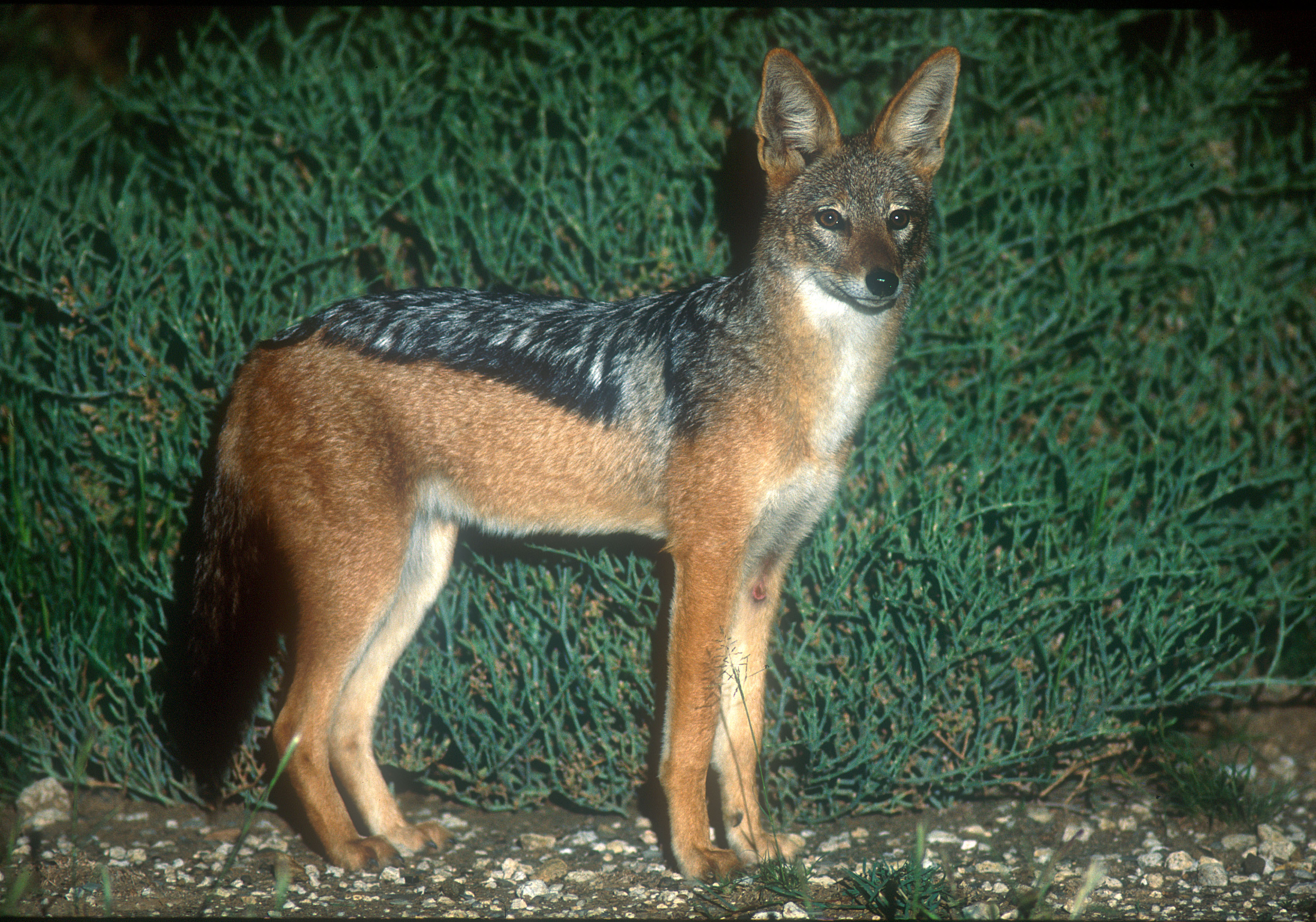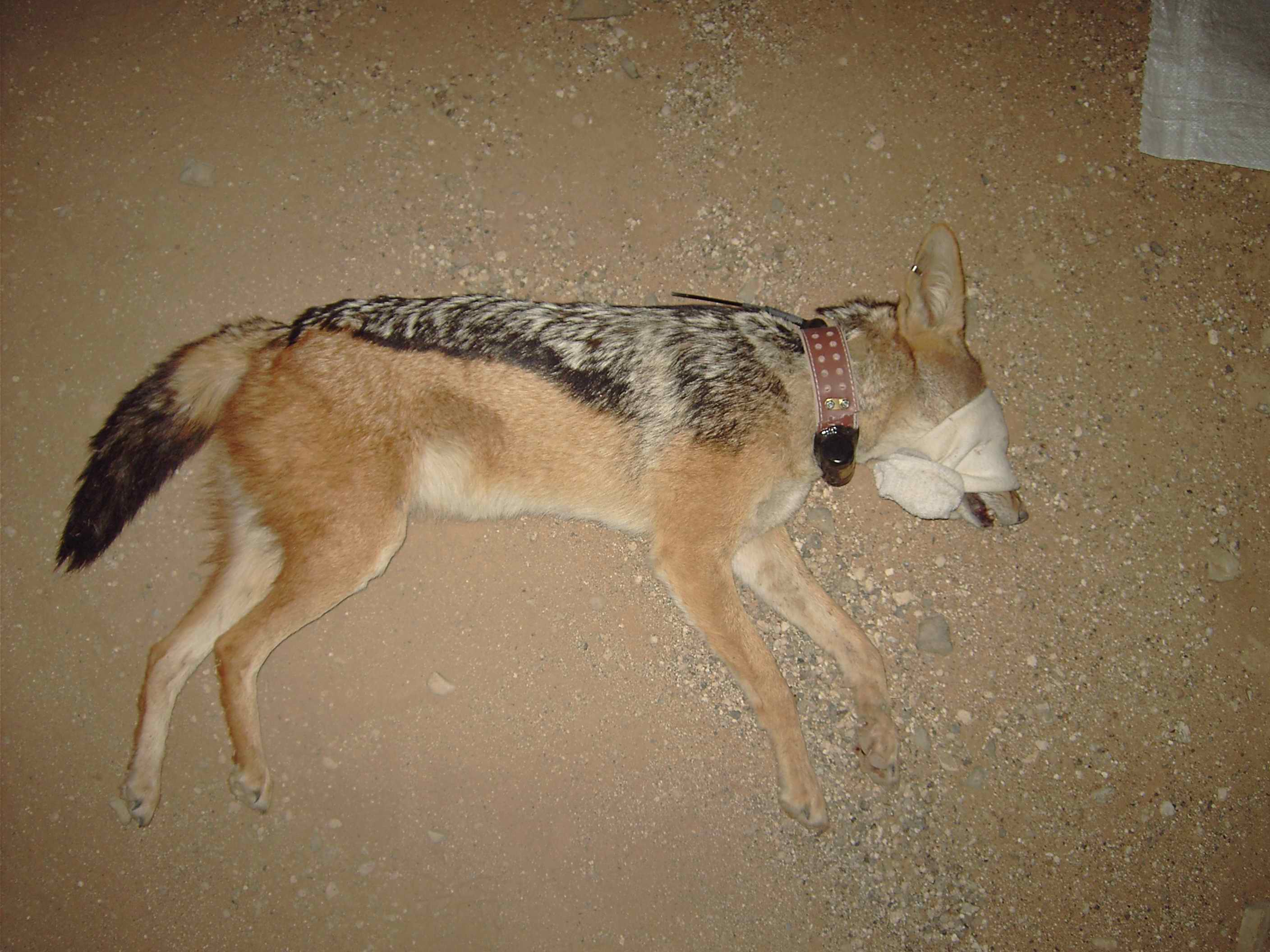News
Jackal survival affected by leopards and humans
If it’s not one thing it’s another – there’s always danger on one guise or another around every corner, writes David Macdonald in introducing a remarkable new study of black-backed jackals led by WildCRU’s Jan Kamler. Fans of opportunism could have no better totem than the black-backed jackal, a mesocarnivore that dodges and dives through a hazardous existence throughout southern and eastern Africa. Lots of forces are against them, but the factors affecting their mortality in both natural or human-dominated landscapes are poorly known: in fact, the annual survival rate has never been determined for any jackal population. Happily, WildCRU had in its archives two remarkable data sets, and Dr Jan Kamler led us in drawing from them the first annual survival rates in jackal populations, and to determine which mortality factors had the largest impact on survival.
The first study site was on Hwange Estate (HWE), Zimbabwe- we considered this ‘natural’ insofar as people didn’t hunt the jackals, and they lived alongside large carnivores. Dr. Andrew J. Loveridge, now known internationally for his work on lions, monitored 12 radio-collared jackals for nearly 2 years on HWE as part of his doctoral research at WildCRU. The second site was on Benfontein Nature Reserve (BNR) which we defined as ‘human-dominated’ because large carnivores had been extirpated, and people hunt jackals both on and off the reserve. Dr. Jan F. Kamler monitored 12 radio-collared jackals for nearly 2 years on BNR as part of his postdoctoral research at WildCRU. Mortality sensors on the collars allowed us to quickly retrieve jackals when they died, and determine their cause of death. So two dozen radio-tracked jackals from our archives, and with analytical assistance from Holly O’Donnell, a WildCRU researcher, annual survival rates of the jackal populations were calculated and compared between sites.
Jackals were killed at similar rates in both places, but by different things. On HWE, predation by leopards was the largest cause of mortality, and contributed most to the relatively low annual survival of jackals (62%). On BNR, human hunting was the largest cause of the mortality, and contributed most to the, again, relatively low annual survival of jackals (56%).
Although five species of large carnivores were present on HWE, only leopards were found to prey upon jackals. A review of other studies suggests that leopards might be the greatest natural predator of jackals. Jackals are likely to have evolved in ecosystems full of large carnivores, and consequently likely have experienced high mortality throughout their evolutionary history. Jackals apparently compensate for high rates of mortality in natural ecosystems by having high reproductive rates. This would help explain why jackals can persist on farmlands in South Africa despite high rates of human-caused mortalities. We were unable to determine if mortalities from leopards and humans suppressed jackal populations, although that should be the focus of future research.
Read the full article here.
-
 © Alexander Sliwa
© Alexander Sliwa -
 © Jan Kamler
© Jan Kamler





